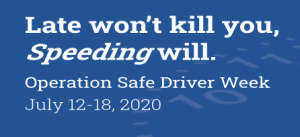Save Time
The most precious commodity. Online training offers numerous ways to increase your efficiency; the most effective being through online orientation.
Traditional in-person orientation for a trucker is about 3 days on average. Every day that one of your drivers is sitting in a classroom and not on the road is potentially 500 miles per new hire. That’s money lost for your bottom line.
You might be thinking, “It’s not always about mileage, safety is a big part of orientation.”
Absolutely, we couldn’t agree more. Since the beginning of the Coronavirus pandemic, the entire business structure has shifted. Companies are now realizing the need for remote capabilities.
Our learning management system allows your new hires to start orientation as soon as the job offer is accepted. Instead of dozing off during orientation presentations, your drivers can
participate in online orientation from the comfort of their homes.
If you eliminate just 2 days of in-person orientation, you are looking at an additional 1,000 miles per new driver! Increased your efficiency, capacity, and revenue instantly.
Bonus: Since your drivers can work at their own pace while online, they get to spend more time with their family. This means, when your drivers do show up for their truck assignment, they aren’t worn out by several days of repetitive workshops or classes. They are fresh; ready to hit the road and make some money.
work at their own pace while online, they get to spend more time with their family. This means, when your drivers do show up for their truck assignment, they aren’t worn out by several days of repetitive workshops or classes. They are fresh; ready to hit the road and make some money.
“Infinit-I is the pioneer and the leader for online truck driver training. For instance, we were able to cut our new driver orientation from two days into 2.5 hours with Infinit-I.”
-Bobur Hasan, HR and Recruiting
Save Money
The industry average cost of onboarding a new truck driver is around $10,000 each. How many new drivers do you take on each year? Most trucking companies have a turnover between 85-105%.
If you run a fleet of 100 drivers, your onboarding cost for one year could be up to $1 million dollars. That’s cost to hire, before rolling. How many miles would your new driver have to run before your company breaks even? And since the majority of turnover happens in the first 90 days of employment, how many of your drivers stay on that long?
 Our safety program has proven to decrease our client turnover by up to 53%. That means is possible for Infinit-I Workforce Solutions to take you from 100% turnover to just 47%. A reduction in turnover like that would save you over half a million dollars per year in onboarding costs. Incredible!
Our safety program has proven to decrease our client turnover by up to 53%. That means is possible for Infinit-I Workforce Solutions to take you from 100% turnover to just 47%. A reduction in turnover like that would save you over half a million dollars per year in onboarding costs. Incredible!
Let’s say, however, that the Infinit-I Workforce Solutions platform reduces your turnover by a modest (very modest) 5%. Here is a simple formula to show your annual savings:

With a fleet of 100 trucks, a 5% reduction in turnover would save your company $50,000 annually.
Save Resources – Drivers, Equipment, Fuel
Our #1 goal is to support you in your effort to create safer drivers. Hopefully, you aren’t willing to put a price on a driver’s life. If our frequent and consistent safety training saves even one life, driver or civilian, our platform proves invaluable to your company.
We can, however, put a price on accidents. The average cost of an accidents/incidents in the trucking industry is around $5,000. Our learning management system has shown some clients up to an 18% reduction in accidents.
“The Infinit-I platform has streamlined our orientation process…resulting in lower CSA scores, reduced worker’s compensation claims, and decreased vehicle incidents and accidents.”
-Shepard Dunn, President & CEO
What could a just a 5% reduction in accidents return to your bottom line? If we figure one accident/incident per week for an entire year, your potential savings could be around $13,000 annually. Plug in your numbers below to figure how much your company could be saving.

Remote training can save you resources in so many other ways too. In-person training sessions, no matter how frequent, will always increase wear & tear on your equipment and unnecessary fuel consumption.
Not to mention the loss of revenue while your drivers are traveling to and from the terminal, not making money for your company. These are opportunity costs that aren’t typically considered when planning for safety training sessions.
And since social distancing is here to stay, in-person training presents even more challenges:
- – What are your legal responsibilities to your employees?
- – Can you accommodate a 6-foot distance between attendees?
- – Will you require your drivers to wear masks?
- – Will you provide masks?
- – What types of masks are acceptable?
Too good to be true? Nope!
See for yourself with a complimentary, one-on-one, 30-minute demonstration with our experts. In just half an hour, you’ll experience the power of the Infinit-I Workforce Solutions platform.
Our learning management system will not only create safer drivers, but will save you time, money, and resources. We can prove it.
Click here to enhance your safety culture in just 30 minutes.
Want to know more…
More New Content Coming Soon! Check out these new additions to our library.
Out-perform, Out-shine, and Out-grow your Current Safety Culture
Why A Positive Dispatcher & Driver Relationship is Key
Why You Should Be Focused on Your Employee’s Cultural Relationships Now More Than Ever




 They experienced numerous infrastructural challenges along the way. The convoy damaged bridges, became stuck off-road, and damaged equipment as a result of roadway conditions. The trip across the country took two months.
They experienced numerous infrastructural challenges along the way. The convoy damaged bridges, became stuck off-road, and damaged equipment as a result of roadway conditions. The trip across the country took two months.



















































